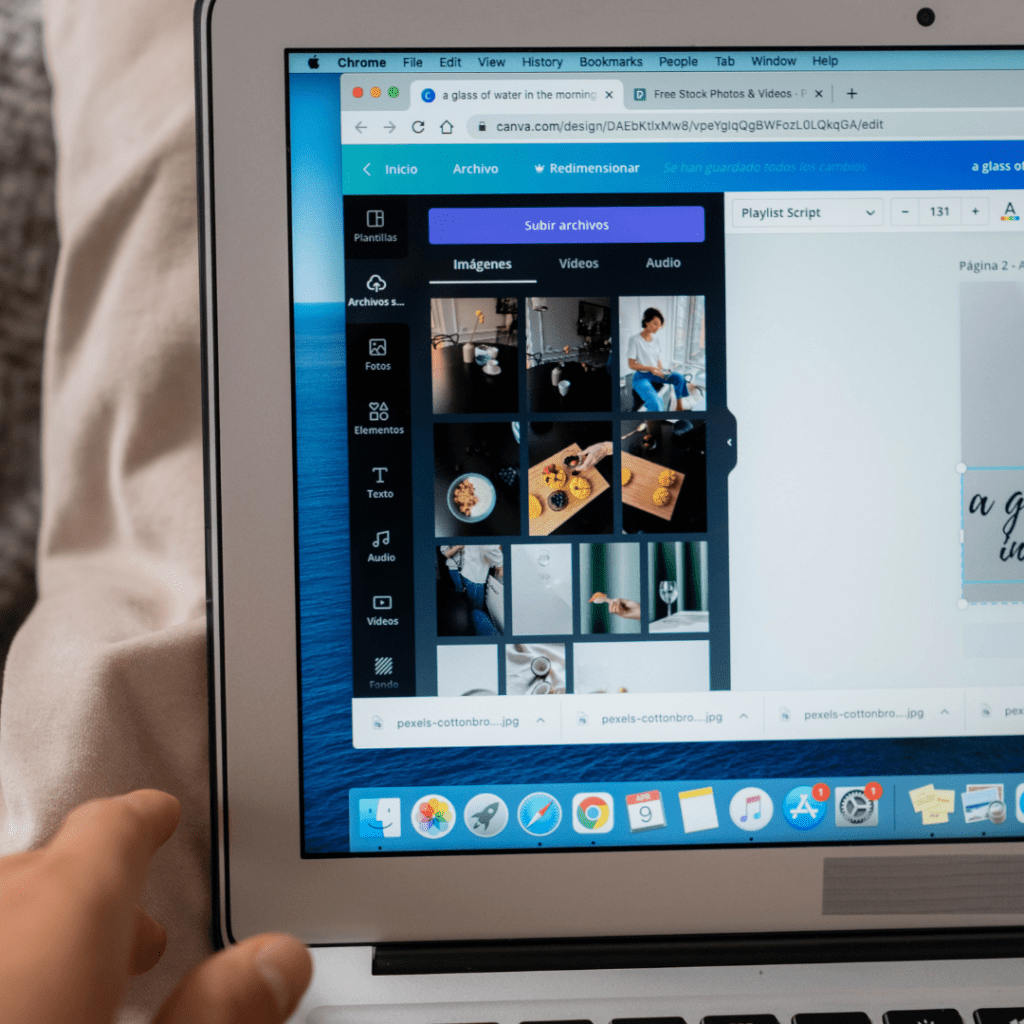It is crucial for any business to know who your ideal client is. It’s always the starting point for any marketing strategy. If you don’t know who to aim your content at, you’re just posting …and you could be hearing crickets.
Whenever you see a business advertising something, you never see the statement, “This is aimed at everyone.” This is where a lot of businesses can fall down.
By aiming at everyone with a generic offer, it doesn’t naturally capture the attention of anyone in particular. Some businesses will argue that their products are aimed at everyone – for example, a card business. And whilst that might be true, a card business can still niche down. Just look at the very well-known online big companies – they have a website with distinct categories and when they advertise, they pick on a particular client to target. Valentine’s Day is coming up and so you’ll see adverts aimed at couples, husbands, wives, girlfriends, boyfriends, partners etc. So, even if you do have a business that could potentially encompass everyone, you can focus your efforts on particular events during the year…after Valentine’s Day, it will be Mother’s Day and Easter. There is always something to focus on. And if there isn’t an event coming up, you can focus on birthdays, anniversaries, weddings – the list is endless.
For this kind of business, you will have a range of ideal clients.
Where do you start?
This is a question I get asked a lot. If you target the right people, they will feel like you ‘get them’ and so what you have to offer becomes very appealing.
Your current customers
The first place to start is to look at your current customers. Who buys from you and why? Take some time to look at who they are – what age are they? What gender? What do they do for a living? Where do they live? What interests do they have?
This is going to be easier for some businesses to pinpoint than others. For example, if you sell children’s books, your customers are likely to be Mums, Dads, Grandparents, and maybe Aunties and Uncles. But if you think a little wider, you could also target schools and nurseries, children’s birthdays, and Christmas. There are stories about about everything, from tooth fairy to camping…and not just stories. There are also educational books, which gives a whole new raft of clients.
Look at your customers’ habits
This is a little harder. You need to dig a bit deeper. What do they like – what kind of things do they google? Do they prefer Android or Apple? Do they hang out on Facebook or on Instagram? What hobbies and interests do they have? For example, your target market might be Mums. A Mum obviously has children, but she will have other interests – she might love Zumba or Yoga; she might like skydiving or love white knuckle rides at the funfair! She might be really interested in a healthy lifestyle – she might not. She might be Vegan; she might love animals – she might be allergic to animals! So, even though you think you are targeting Mums, you could have the potential to target so many other areas too. And it’s up to you to decide on your niche.
Look at your customers’ goals
Knowing what your customers aspire to can help you with ideas for your content. You might be a wedding planner, but you will know that your customer is not only interested in planning her actual wedding; she also wants to have her hair/make-up/nails done. She wants to have lovely flowers, and evening do with music.
It’s good to be able to see the bigger picture. And if you have contacts with the various other businesses you know she’ll want, that can be part of your service to find the right things for her. That gives you much more scope to advertise your service.
Solve a problem
Does your product or service solve a problem? If you can identify some kind of challenge that your potential customers face – and can give them the solution, you’re onto a winner.
How do you customers decide to buy?
There are different types of buyers. There’s the person who totally buys on impulse; sees it, wants it, buys it. This isn’t always a bad thing – it might be that you offer exactly what that person is looking for at that moment in time – or your product might be something that triggers a memory – ‘my best friend would love that’ and buy.
Then there’s the buyer who likes to do some research, look at the benefits and features of a product, does price comparisons and looks at all the reviews.
If you have customers who will buy on impulse, make sure that your shop or website is easy to use, and they can order and pay easily and quickly.
If your customers like to take their time, ensure your website is up to date, has relevant reviews in a prominent place…and that your product descriptions are spot on.
Who would you like to be your customer?
This sounds like a weird thing to say – surely it’s anyone who wants your products or services? If you’re a service business, you’re sure to have had the odd difficult customer and wouldn’t necessarily want that again, so it is a consideration.
You might prefer to work with Mums, for example, or with people who are like-minded. Again, this is a useful consideration to make when thinking about your ideal client.
Your customers are on Facebook – what next?
OK, so you now know what your ideal customer looks like. Build up a couple of client personas and keep them somewhere to help remind you when you make your content. I talk about this in a previous blog post.
What’s next?
You know your customers are primarily on Facebook.
How do you get to them?
As well as setting up a business Facebook page, so you can keep it separate to your personal stuff, Facebook Groups are THE BEST PLACE to find your ideal customers.
There are Facebook groups for absolutely anything you can think of. Once you know who your ideal customer is – what they like to do – what they are interested in – you can join groups where you know they’ll be. On your Facebook homepage, there is a search box top left of the page. You can search for anything. If you know what your customers like, you can search for them. For example, you could type ‘Groups joined by people who like XXXXXX’
If you go to your personal page and click on Groups – then click on ‘discover,’ Facebook will show you groups that your friends belong to.
Always read the rules of a group before you join. You don’t want to join a group where people just share promotional content all the time. You want groups that are supportive of each other, have conversations, maybe themed days, and who have engaging posts that you can join in with. This is the way to build engagement on your page, as you will be able to put a link to your Facebook page, whilst supporting and talking to other like-minded people.
Facebook groups are a great way to make friends, make connections, ask for and give advice, and to offer your expertise. People will notice you and your business if your name pops up a few times a week, especially if you take the time to engage and have conversations on posts. After all, it’s not called social media for nothing!
I would advise being on no more than 3-5 of these groups as you need to get involved and it can be time consuming, so it’s better to be very well known on a couple of groups, than posting and engaging randomly every month or two on lots of groups.
Start your own group
You really need to think before you start your own group as it is also something that takes up a lot of time. But it also means you have your own group of people who like what you do and have similar things in common. And it gives you valuable insights into your target audience.
Insights
When you have a Facebook business page, you get access to your insights. This gives you lots of valuable information, such as what kind of posts your audience finds most interesting.
When you log into your insights, you’ll automatically see figures from the last seven days, but you can look at the last 28 days.
When you scroll down, you’ll see post insights on your most recent posts. It will tell you what kind of post it is; whether it’s a straightforward post or video for example. It will tell you your reach, and the engagement that post has had, be it comments or likes.
The last section gives you insights into your competitors. Facebook can recommend pages for you to watch here, but you can also add pages, so you can tract a particular competitor’s performance if you want to.
When you are on your insights page, you will also see a list of options on the left-hand side, and you can click on any of these categories. For example, if you click on ‘likes,’ it will show you a tracker of your likes and you can track the last 28 days to see how and when your figures grew. If you click on followers, you can track your followers in the same way and see how many unfollow you too. It’s definitely worth spending a bit of time having a play with your insights to better understand what’s happening on your page. I try and check mine once a week and I’ve found it invaluable for knowing what kind of posts my followers like and find useful.
I hope that this blog post has given you some ideas to help you find your ideal clients on Facebook, and also how to understand them and what they want from you.
Please follow my blog for more posts on marketing your business. And, as always, feel free to get in touch if you have any questions.















 One of the first things I did when I started my own business, after building a website, was to set up a business Facebook page. However, like many people, I then didn’t do much with it as I was busy concentrating on getting my business up and running….not realising that I was actually missing a trick! With an estimated 42 million active accounts on Facebook, there is plenty of competition, so how can you make your Facebook page stand out and get you more ‘likes’?
One of the first things I did when I started my own business, after building a website, was to set up a business Facebook page. However, like many people, I then didn’t do much with it as I was busy concentrating on getting my business up and running….not realising that I was actually missing a trick! With an estimated 42 million active accounts on Facebook, there is plenty of competition, so how can you make your Facebook page stand out and get you more ‘likes’? Linking to your Facebook page gets your business in front of potential customers. If you have a website or blog, put a link to your Facebook page, with a ‘like’ button.
Linking to your Facebook page gets your business in front of potential customers. If you have a website or blog, put a link to your Facebook page, with a ‘like’ button. Some say you should post once a day and others say three times a week is enough. Whatever you decide to do, be consistent…this is easy to say and I know I’ve fallen by the wayside a few times, so don’t beat yourself up if you don’t manage it, however the more times you post, the more engagement you will get. Images seem to help with engagement, so always use a quality image – if you can, use your own from photos etc. If you use images from the internet, make sure you don’t breach copyright.
Some say you should post once a day and others say three times a week is enough. Whatever you decide to do, be consistent…this is easy to say and I know I’ve fallen by the wayside a few times, so don’t beat yourself up if you don’t manage it, however the more times you post, the more engagement you will get. Images seem to help with engagement, so always use a quality image – if you can, use your own from photos etc. If you use images from the internet, make sure you don’t breach copyright. Do you run events? Whether you do them regularly or as a one-off, make sure you take plenty of photos of the people attending and enjoying themselves. After the event, post the photos on your FB page and tag as many people as you know in the photos. Then post, inviting others to tag themselves in your photos …and to post photos of the event that they’ve taken themselves. This will not only upload to your page, but will also upload to their wall and their friends will see it.
Do you run events? Whether you do them regularly or as a one-off, make sure you take plenty of photos of the people attending and enjoying themselves. After the event, post the photos on your FB page and tag as many people as you know in the photos. Then post, inviting others to tag themselves in your photos …and to post photos of the event that they’ve taken themselves. This will not only upload to your page, but will also upload to their wall and their friends will see it. If you send out a regular newsletter about your business, talk about the fact that you have a business FB page and include a link so recipients of your newsletter can go and like your page.
If you send out a regular newsletter about your business, talk about the fact that you have a business FB page and include a link so recipients of your newsletter can go and like your page.